

Visual Supplements to Fredric Jameson's "The Cultural Logic of Late Capitalism" Part IV
Dr. Michael Filas
In Part IV, Jameson expounds upon postmodern space and time with a focus on euphoria, or the intensities that create a "hysterical" sublime. As usual, Jameson is juggling several investigative threads at once: the effects of technology, alienation, derealization, simulacra, camp, the demise of the unconscious, and capital as synonymous with technology. This section is no more or less important than others in the article, but it does refer to lots of visual art and I thought you might get a better understanding if you had some idea what that art looked like.
I suggest reviewing these images and then revisiting the section in the article to see if you get more out it with some images to work with. To see more visual examples from any of the following artists, use google image search. I've created a link to one information page for each artist if you care to investigate any of them more deeply. Unless otherwise noted, the artists and writers discussed below are American.
On p. 32 Jameson mentions some modernist painters including "the desolation of [Edward] Hopper's buildings." Among other attributes in his work, Hopper is known for his realism and representations of alienation and loneliness. He worked in the first half of the twentieth century and his work could illustrate literature of realism and naturalism by the likes of Theodore Dreiser, Frank Norris, and others.


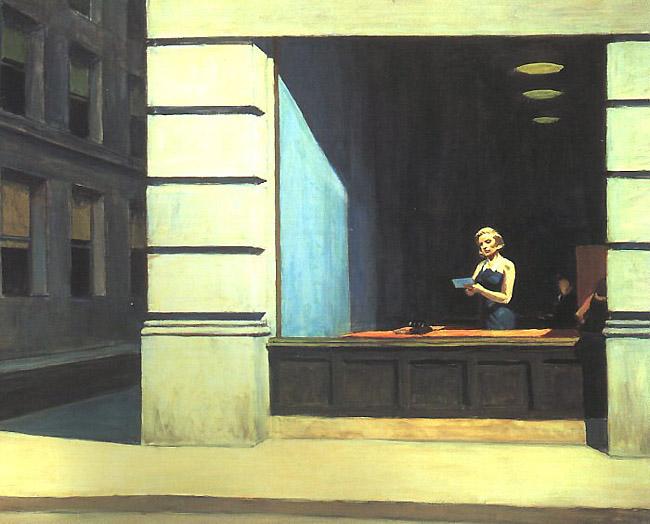
In the same context as Edward Hopper, Jameson mentions the "stark midwest syntax of [Charles] Sheeler's forms" (32). Another modernist, Sheeler works with paints and photography and is well known for his precisionist representations of industry. He was fond of the line and dimension of modern life and did not include human figures in his work. Sheeler's fascination for modernist form is anlaogous to Hart Crane's famous poem, The Bridge, and the modern attention to the thing itself as seen in works by poets such as Wallace Stevens and William Carlos Williams. The same aesthetic scope can be found in a lesser degree in the novels of John Dos Passos.


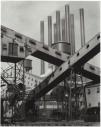
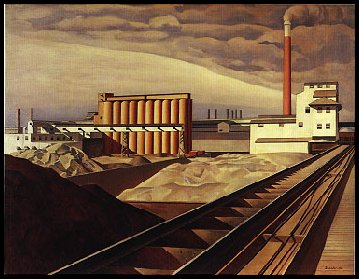
Jameson then goes on to discuss a shift to a "photorealist cityscape, where even the automobile wrecks gleam with some new hallucinatory splendor" (32-33). Jameson is referring to the pop art of Andy Warhol, in works such as "Orange Car Crash" (1967), and the sculptures of John Chamberlain, a pop artist who uses wrecked cars as the medium for his sculptures. Note that in this part of the essay Jameson is emphasizing the hallucinatory aspects of things, and you will see a postmodern and pop art euphoria represented by color, repetition, and playfulness, despite the morbid subject matter (in Warhol's case) or the destruction implied in the materials (in Chamberlain's case).
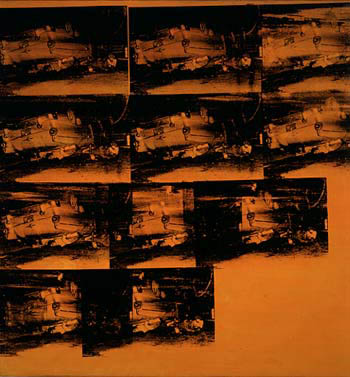
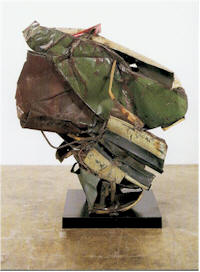
The literary equivalent of car crash art is most notably found in the novel Crash by J.G. Ballard, an Englishman known for his postmodern novels. However, the spirit of revelling in urban and suburban decay can be found in postmodern writers such as John Cheever, Joan Didion, and a multitude of others.
On page 34, Jameson moves into his discussion of Duane Hanson and his wonderful life like sculptures. This broaches the simulacrum, and Jameson's notion of the "'hysterical' sublime." Although he does not discuss it in these terms, a way of understanding these representations is to think of a new objectivity, a lack of affect. There is no depth or artistic treatment here (unlike, for example, Edvard Munch's Expressionist painting "The Scream"), instead there is just an uncanny realism which reflects a morbid perception of non life back onto the living breathing audience who share the space. It can also be called neo realism. Here are some examples of Hanson's work, the last one, called "Traveler," is on display at the Orlando airport.
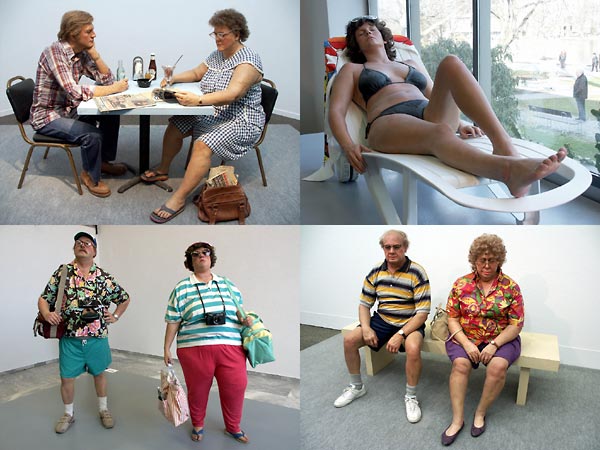
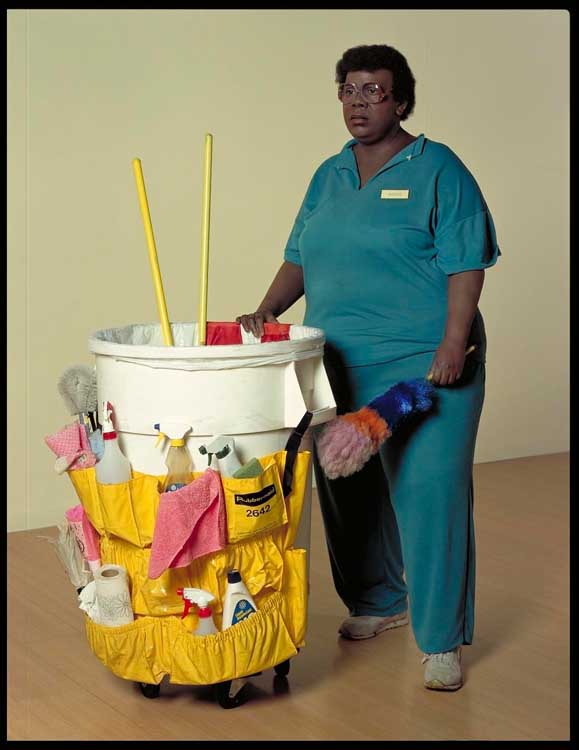
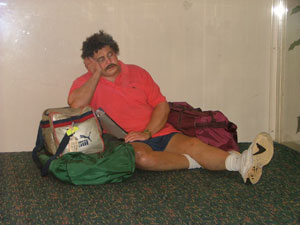
One of the troubles with studying postmoderism is that it is of our time and thus, a moving target. But I think the supposed reality of reality television, and not just shows like Survivor and American Idol, but things like Cops, Judge Judy, and The Real World, sometimes depict people in a similar manner.
In his discussion of Hanson, Jameson detours, momentarily, into a mention of camp. Here I want to pause and invite you to check out this great website developed by Dino Felluga at Purdue University. Although incomplete, Felluga's site breaks down many of the principle ideas of postmodernism (including camp) and other aspects of critical theory. I found his web site well designed, easy to navigate, and well written.
As far as camp goes, another visual artist, Jeff Koons, has work that clearly involves camp. His wife is a porno star and many of his photos and sculptures show the couple engaged in neo realist sexual congress, genitals and all, with camp props and costumes. Postmodern culture often involves camp as a means of openly interrogating the performative aspects of identity and subjectivity. However, if subtlety is your thing, you are better off looking elsewhere besides Jeff Koons. Here are some of his less flagrant works:
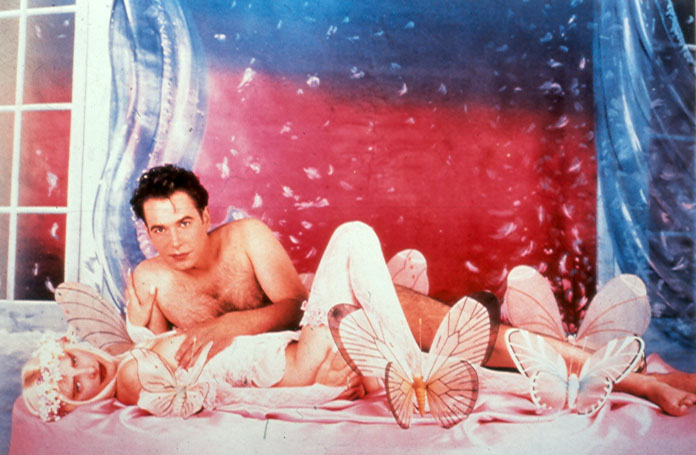
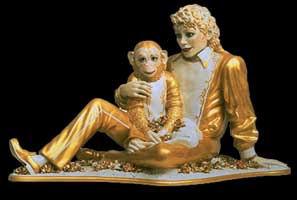
Speaking of camp and neo realism, here's an example of contemporary postmodern art, Daniel Edwards's 2006 controversial sculpture of Britney Spears giving birth vaginally, even though in real life she had a cesarian section. Click on the link for Edwards if you want the rear view, or if you want to read about similar prank-flavored works of art, such as "Suri Cruise's First Bowel Movement."
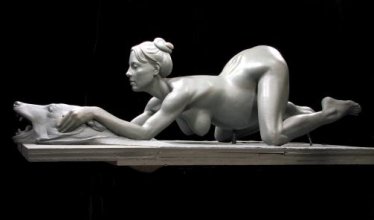
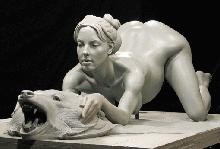
This represents trash culture rendered with some artisitic precision, but this sculpture has been claimed by the pro-life lobby to represent anti-abortion causes. This instant free play of signifiers, and the spirit of nothing being divine or sacred, is partially what Jameson means to account for in his use of the postmodern sublime.
Although she has yet again changed her fortunes since 2006, here is one more example of postmodern camp, Madonna on a cross during a tour from that year. Having established a venerable history of postmodern identity transformations, Madonna here seems to be somehow inadvertantly representing the failure of her ability to sustain freshness through her former methods. Attempting to use the idea of a crucifixion as pastiche, her appropriation of the cross somehow lacks the commitment she may have given to her previous incarnations. Based on the general lack of interest her stunt generated, we might begin to see her career as a whole as representative of the life cycle of postmodernism having plateaued and possibly reaching a point where a different aesthetic will emerge as the dominant cultural code. Or, Madonna might simply be replaced by younger, fresher faces doing the same things she has done before, but with new shiny faces and "personalities" riding the intensities. Perhaps Madonna's presence in the simulacrum as a mother, wife, Evita, and Kaballa reader undermine her ability to ride the cross here for any resonance at all. In other words, perhaps she has established too much (simulated) character depth, at this point, to still partake of the free play of signifiers she's mastered so well in the past.
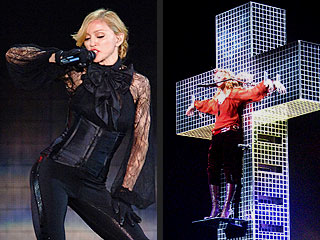
Camp is fun, but it is not a focus of Section IV of Jameson's essay. He is focused on technology and the evolution, of sorts, of the artisitic representation of the postmodern relationship with technology as the ultimate material embodiment of capital. It is the technological mastery of Hanson's sculptures that allows us to have that moment of confused delirium, the hallucinatory recognition of ourselves in an inanimate object. Ironically (because irony is front and center in most postmodern culture), the lack of affect, the objectivity of Hanson's work is antithetical to the other art featured here, even to the aesthetics of cyberpunk art (as in "The Matrix"), which has a heavy focus on the machinery, on the technology itself.
On pages 34-36 Jameson discusses the postmodern sublime, the inseparable link between technology and capital, and the development of technology. The essay gets deep with references here: Kant, Burke, Heidegger, Mandel, and more. He explores the notion of technology as an "other" to the postmodern subject's identity. The more you understand these references the better you will understand Jameson's logic and explication, but you needn't follow these to get the gist of his argument. Here, on page 36, Jameson also returns to using visual artists as exemplars of the way culture perceived technology at particular points in history, and the remaining visuals on this page accompany the last full paragraph on page 36:
Images of Futurism, a European movement centered in Italy in the 1910s:
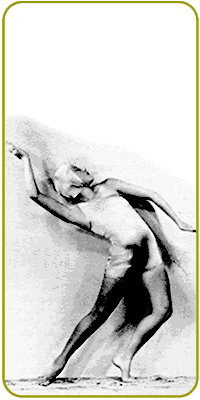
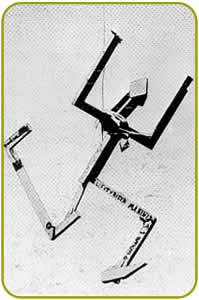
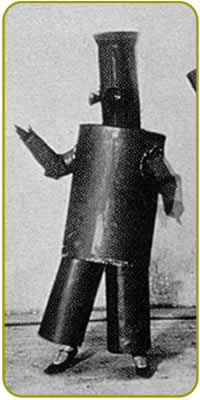
Two buildings by French architect Le Corbusier; the modern skyscraper is the UN Headquarters in New York:

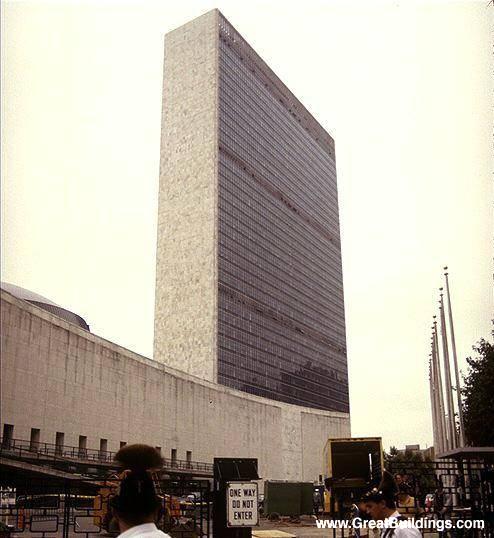
French artist and poet Francis Picabia, who is cited by Jameson for his involvement in Dada:
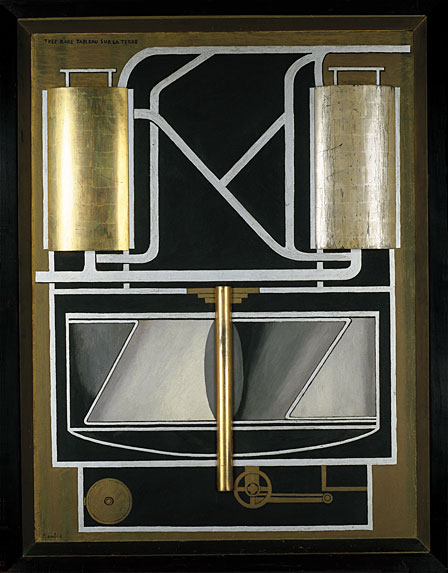
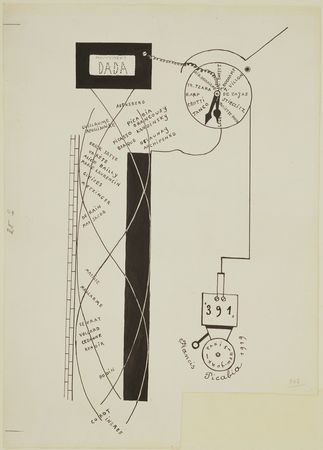
Marcel Duchamp, another Frenchman, was famous for his influence in Dada and Surrealism, and is also a key pioneer of postmodern thought through his revolutionary invention of readymades, art that is rendered as art simply by being placed in the museum. As Jameson said, the topic is too large to adequately digress into here, but if the idea of hanging a urinal in a museum, signing it, and naming it "Fountain" appeals to you, then you might enjoy looking further into his work. He is also famous for drawing a moustache on a reproduction of the Mona Lisa.
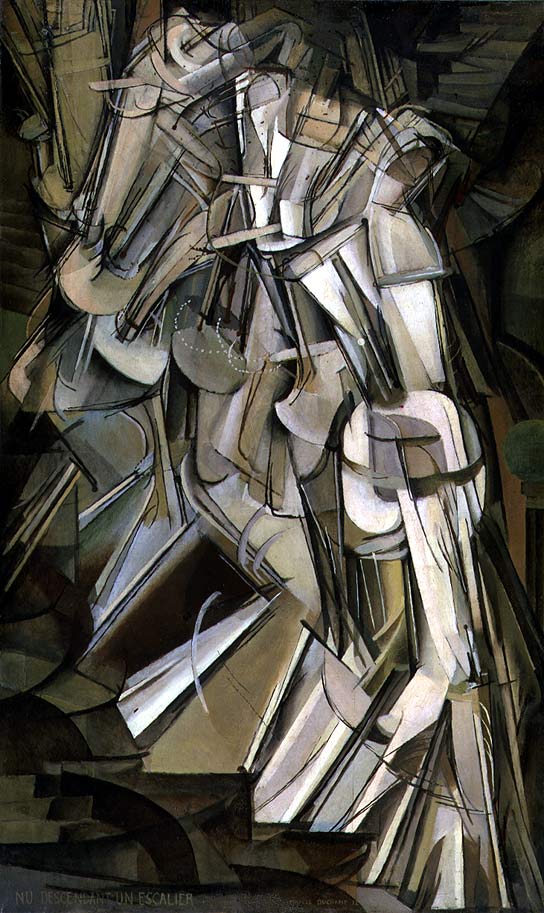
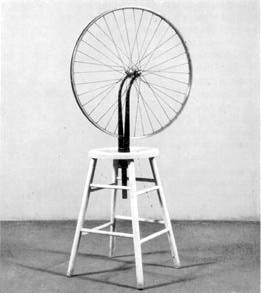
Jameson then broaches the work of communist artists Ferdinand Leger (French) and Diego Rivera (Mexican) who portrayed machinery as a means to reconstruction of human society as whole. Here are some examples of Leger's work:
And Diego Rivera's murals:
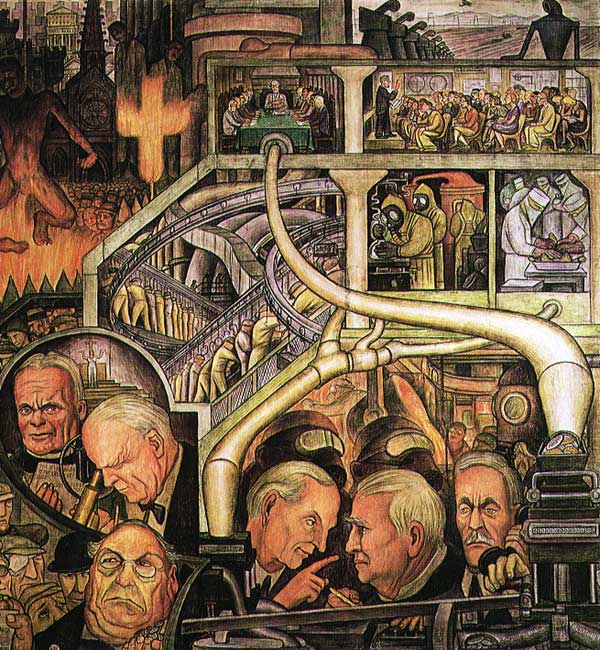
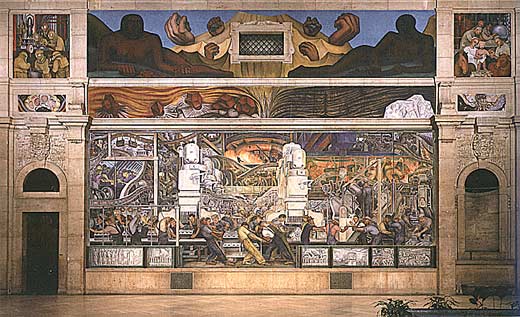
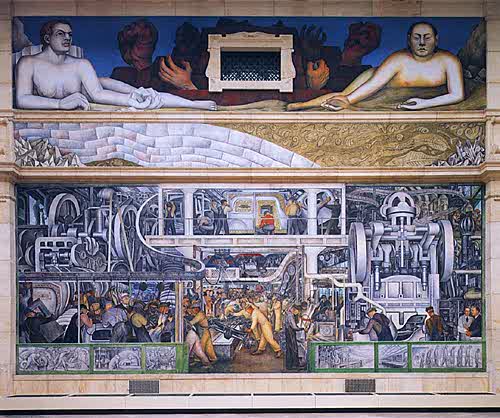
Finally, Jameson ends with allusions to William Gibson's cyberpunk novel Neuromancer. If you've seen The Matrix, then some of that aesthetic can be found there in the depthless confusion of ontological levels and the endless racks of guns and a time-space continuum in which dodging bullets is suddenly possible because the body is no longer a flesh body, but a simulation of one, an avatar. But that broaches a whole new cognitive map, which is where Jameson ends up with this article, but not in section IV.
If you have found these examples of visual art useful, I suggest you look into the photography work of Cindy Sherman, who uses herself as the model in all her photographs but changes her look so dramatically that you are always wondering if it is really her. It is a visual art analog to the way Didion, Auster, Vonnegut and other postmodern writers include themselves in their books, after a fashion, to explore the slipery slope of postmodern identity and subjectivity.